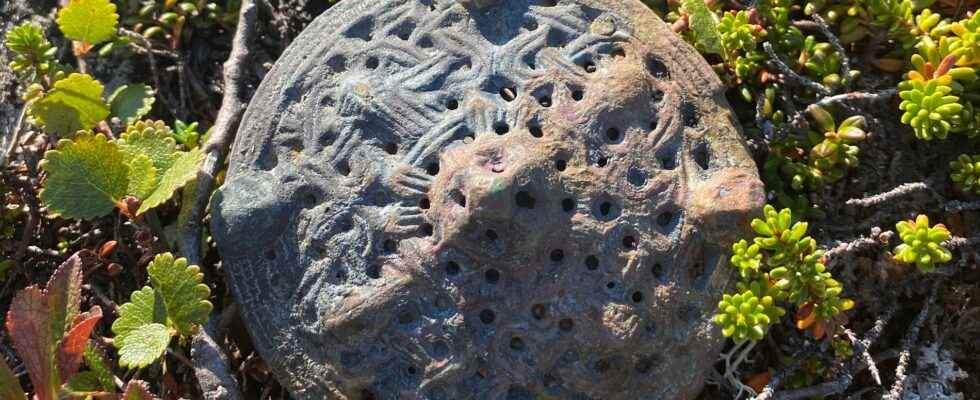Published: Less than 20 min ago
full screen
Next
The 1,200-year-old buckle that Eskil Nyström found in the Jämtlandsfjällen last year.
1 of 2 Photo: Eskil Nyström/Private
A mountain hiker in Jämtland made a surprising discovery when he was going to camp up on Kalffällen.
It has now turned out to be a 1,200-year-old buckle and probably the first female grave from the Viking Age to be found in the Swedish mountains.
The first to report the find was P4 Jämtland. It was when the mountain hiker Eskil Nyström came across a rock last year, in connection with stormproofing his tent, that he saw something sticking out of the ground.
– My first thought was that I had found a mine. But then when I had dug around I understood that it can’t be, he tells TT.
He took the buckle home with him, asked around a bit, but it wasn’t until a year later that he got in touch with the county museum Jamtli in Östersund. It turned out to be a buckle from the 9th century.
– It is incredibly exciting.
“Top class stuff”
Anders Hansson, archaeologist at Jamtli, was up and inspected the site for the first time on Wednesday morning. There they found soot, burnt bones and at least one more buckle.
– The quality of the finds is among the best you will find in Scandinavia. It’s not something you bought at Rusta, this is high-class stuff, says Anders Hansson to TT.
What has been established is that it is a cremation grave from the Viking Age and “most likely” a woman’s grave, he says. Previously, only five other Viking graves have been found in the mountains, and all have belonged to men.
Although the site has not yet been excavated, 1,200 years of dormant history was brought to life during this morning’s visit.
– You get the feeling that it is people who have been on their way somewhere who have died. That the burial took place where the woman died. They could have taken the woman home where they lived, but instead they make a cremation pit on the mountain, says Hansson.
No monuments
He describes the tomb as very richly equipped.
– It’s really pretty. It is completely socially and religiously correct, she takes all her most precious objects to the grave. But there are no monuments, no burial mounds or cairns, and are thus different compared to Viking graves in Iron Age settlements. It’s just flat hill.
No major excavation will be carried out until next summer.
Anders Hansson says that all finds of this nature are important because researchers are still trying to find out who the people who lived in the mountain world in the Viking Age were, how they lived and how they moved.
– This means that every single find is super important, he says.
